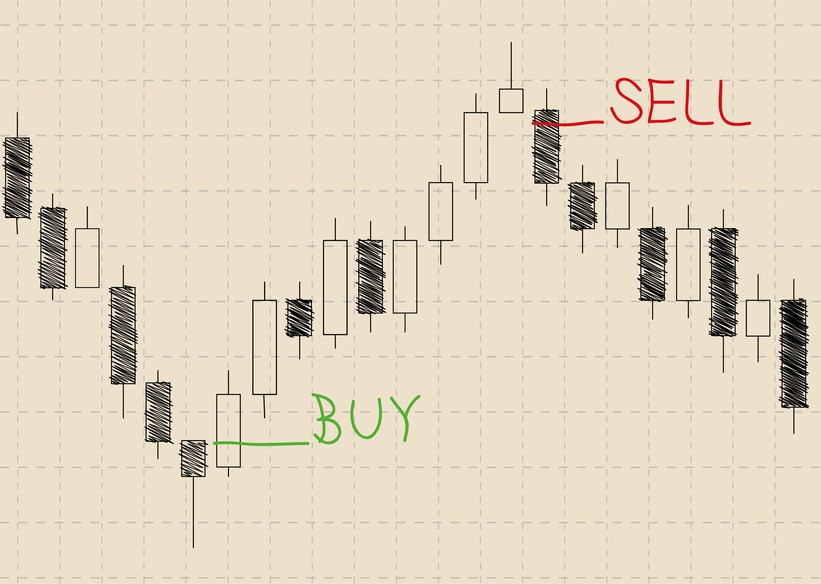The COT report showing the hands of the biggest traders
Post on: 12 Май, 2015 No Comment

Join Date Mar 2011 Location Near a beach. Posts 279 Post Thanks / Likes Likes (Given) 0 Likes (Received) 0 Dislikes (Given) 0 Dislikes (Received) 0
The COT report — showing the hands of the biggest traders.
Finally the small guys get a break. But why do so few know about it?
The commitment of traders report has been issued by the CFTC since 1962. It is issued every week now. It tells us who has placed long and short trades in the futures market. It is not a sentiment report but a report showing us where the biggest money has already put their positions.
This article will not be a comprehensive run down of how to read and analyze it but when you see me make reference to it in my trade analysis, you can get an idea of what I’m looking for. I would not feel comfortable trading without seeing the COT report for the week on the assets I trade.
The players in the COT:
The commercials: These are the biggest money movers in the world. Exxon Mobile is likely a commercial futures trader for oil, Monsanto is likely a commercial futures trader for corn, though we can’t know for sure. They are ones who actually use the items in their business or produce it. They often produce corn or wheat or oil or whatever and sell a futures contract to someone else because at that price they know they can turn a profit. The futures contract protects them against some catastrophe, like a hurricane, from affecting prices. As price moves against them, they actually buy more of it. Because it is a product they will be selling, the lower price makes it a better buy. Eventually, they buy it enough that the down trend turns into an uptrend. Or as the price goes higher, they sell more of it because it will give them more profits now than it did last week.
The small speculators — These guys are trend followers who generally (but not always) have no real interest in wheat or corn or even currencies. They are speculators like you and me but have a lot of money. In Forex, these are the banks who run the markets on a day to day basis. As price trends up, they are scaling into long positions. This makes them a ton of money until the trend changes. Then they sell off their long positions and get reoriented short to follow the new down trend. They are taking the opposite side of the commercials. They tend to lose a lot of money when the trend changes. Maybe they should be looking at the COT too
Non-reportables — This is us. Too small to be reported but account for some of the open contracts. These are the folks who are usually wrong. Don’t trade like this group.
Open interest — This is the total number of open contracts. Every contract has one buyer and one seller. If the commercials have 70% of the total number of shorts, this shows they are interested in that commodity and think the price is at a premium to sell, meaning they think it is too high. Since they move the markets, the market will move. And it moves against the small speculators and the non-reportables. If the commercials are not net short or net long and the open interest is mostly between the small speculators and the non-reportables, open interest doesn’t tell us much. We are watching the commercial traders.

How to use this? We are looking for a major trend change. When the commercial traders are at a seasonal extreme, 6 months to 12 months of shorts or longs, we will be expecting a trend change. Also we want to see if the commercials have a majority of the long or short positions as this adds more weight to the indicator. The COT is a leading indicator because as the commercials make a net long or short extreme, price will often take 2 or more weeks to actually change direction. The trend following banks do not want the trend to change and will keep fuelling it to keep going but at some point, they will be overpowered by the better funded commercials. The trend change will happen usually at a major support or resistance and usually coincides with a seasonal change. The commercials will overpower the small speculators and create a trend change. Then the small speculators will have to close their positions and get in tune with the new trend. The large speculators fuel the new trend.
Seasonal changes happen because wheat (or whatever the commodity is) isn’t produced all year long. All the money that was in wheat suddenly goes into treasury bonds. That influences our currency rates. Or when tax season comes around, there isn’t as much need to borrow so bond yield interest rates fluctuates and that influences currency rates.
This is where I get COT reports:
cotpricecharts.com
Last edited by WaveRider; 01-14-2013 at 02:33 PM.














